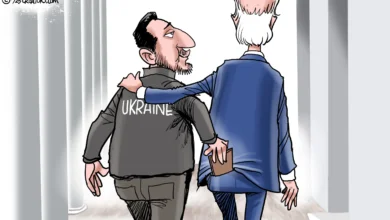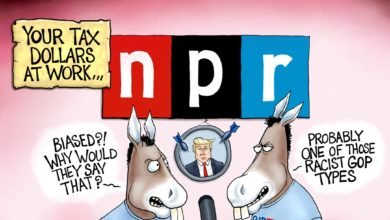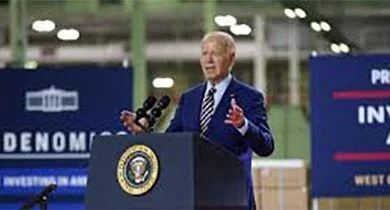Pearl Harbor: A Day That Lives in Infamy
On December 7, 1941, the Japanese Imperial Navy bombed the US Naval base at Pearl Harbor. The surprise attack shocked the nation and brought it into a world war. To this day, it remains seared in America’s historical memory. Renowned historian Victor Davis Hanson explains why.
Transcript
On December 7, 1941, the Japanese Imperial Navy bombed the US Naval base at Pearl Harbor. It was one of the most successful—and failed—surprise attacks in military history.
The attack shocked America and the world.
President Franklin Roosevelt described it as “a date which will live in infamy.”
An armada of six fleet carriers, equipped with some 350 combat aircraft, crossed 4,000 miles of rough winter seas to reach its destination.
Neither American radar operators on the island nor intelligence officers who had broken many of the Japanese naval codes had an inkling of the approach.
Flying out of the bright early morning sun, two waves of bombers sank four battleships of the US 7th fleet, damaged four others, and killed over 2,300 American sailors and soldiers. The Japanese suffered minimal losses of just 29 aircraft.
The attack was brilliant.
But it did not achieve its goal—for two reasons:
One:
By a twist of fate, the three American aircraft carriers based at Pearl—the ships the Japanese most wanted to destroy—Enterprise, Lexington, and Saratoga—were all out to sea on the 7th—and safe.
Two:
The Japanese didn’t finish the job.
To put the base out of commission required not two, but three attack waves. This final wave would have destroyed a full six months’ worth of stored naval and aviation fuel, dockyards, and maintenance shops, and truly set the Americans reeling.
Yet, at the last moment, Admiral Chūichi Nagumo concluded that the risks were too great—his planes and ships too vulnerable to a counterattack. He made his way back to Japan, leaving the Americans bloodied, but not fatally so.
Why did the Japanese attack at all? What did they hope to accomplish?
The answer is that Japan intended to dominate and control all of Asia: its people and its resources. To do that, it believed it had to neutralize America.
From the hindsight of history, this appears suicidal. But at the time, it almost made sense.
To begin with, in 1941 the United States was, militarily speaking, in a sorry state. The ships in its Pacific fleet were few and many were outdated. The Japanese fleet, in contrast, was newer, bigger, and stronger.
Second, America had no appetite for overseas conflict.
Like the rest of the world, the Japanese had watched most of Europe fall to the Nazis while America did little to stop it. If the US wasn’t going to fight in Europe where it had many alliances, why would it fight in Asia where it had few? How much more so if Japan were to destroy most of the Pacific fleet! Surely, the Japanese reasoned, America would sue for peace.
Other current events also went into their thinking.
When Japan attacked Pearl Harbor, it assumed—again, quite reasonably—that Hitler’s forces in Russia would quickly capture Moscow and take the Soviets out of the war. This would remove any threat the Russians might pose to Japan’s conquest of Manchuria and China.
A new fascist world order appeared to be on the horizon. Germany would rule Europe; Japan, Asia.
But just as Hitler underestimated Soviet strengths and overestimated his own, the Japanese underestimated American strengths and overestimated their own.
Instead of cowing America, the Pearl Harbor attack enraged it. The nation woke up with a fearsome start.
Within six months General Jimmy Doolittle led a surprise bombing raid on Tokyo, an astounding feat no one at the time, including the Japanese, considered possible. American carriers simply did not have enough runway to launch a long-range bomber. But somehow Doolittle managed it. The raid did little actual damage, but it boosted American morale and sent a stern message to Japan: America would not be intimidated.
By August 1942, a mere nine months after Pearl Harbor, American forces shifted to offense, landing Marines on the island of Guadalcanal. Meanwhile, at home, the nation was gearing up for the greatest industrial renaissance in the history of civilization.
In little more than 3 years the United States would build more warships and support vessels than all the navies in the world combined.
America was entirely unprepared for the surprise attack on Pearl Harbor. Thanks to the strong, uncompromising leadership of President Roosevelt, it brought its economic and moral might to bear and turned the war around with astonishing speed.
In the hindsight of history, it seems like the allied victory was inevitable. Maybe it was. But victory came at a terrible price. Over 110,000 American servicemen died and over 250,000 were wounded to win the war in the Pacific—and another 21,000 spent time in horrific Japanese prisoner-of-war camps.
Preparing for war is expensive, but not nearly as expensive—in blood and treasure—as fighting a war. That’s one of the many lessons to be learned from what happened on the fateful day of December 7, 1941.
I’m Victor Davis Hanson, senior fellow at the Hoover Institution at Stanford, for Prager University.
Content created by Conservative Daily News and some content syndicated through CDN is available for re-publication without charge under the Creative Commons license. Visit our syndication page for details and requirements.




